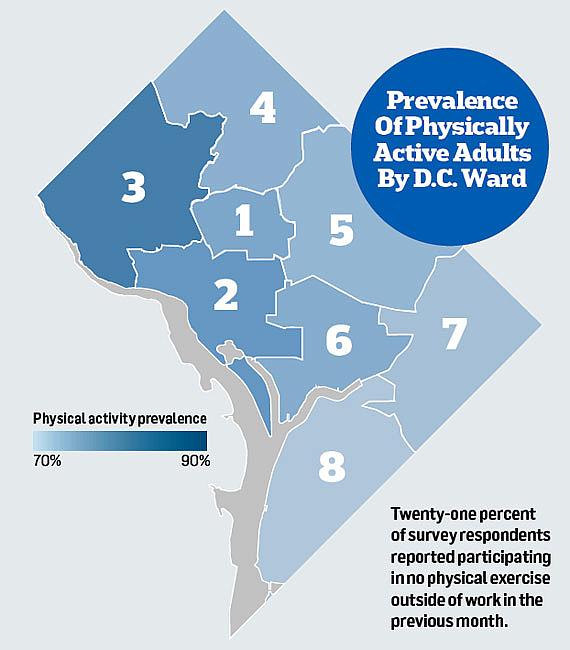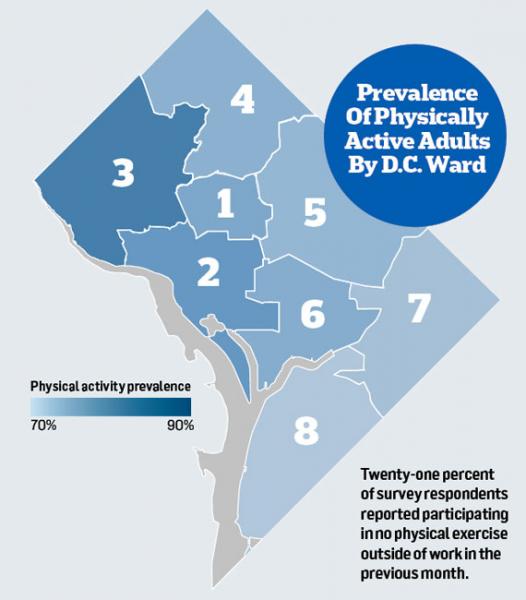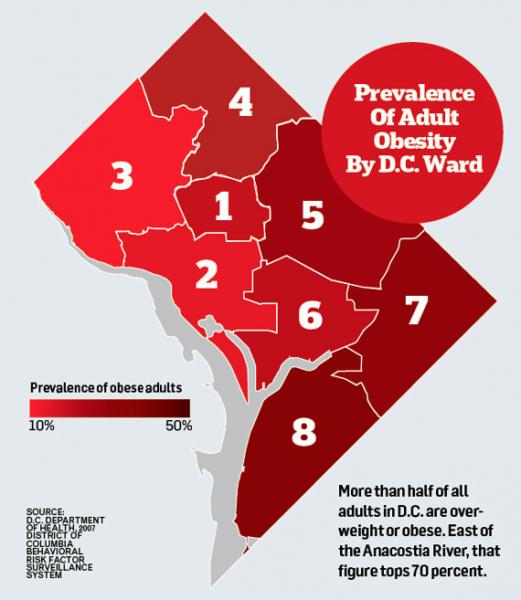Fitness: Standing Still's Not a Choice
This is the first article in an occasional series examining disparities in access to physical activity in Washington. The series will profile the city's exercise champions, delve into the issues that stand in the way of healthier lifestyles and suggest ways to help out.

Everyone's on a mission to annihilate "food deserts," those low-income areas lacking in grocery stores and littered with greasy carry-outs. But what people eat is only part of the reason that obesity is consuming this country — and this city.
Despite Washington's reputation as an exercise capital, the truth is that residents aren't getting the physical activity they need, particularly in Wards 7 and 8.
So does that mean we also have a problem with "fitness deserts"? That's trickier to determine, because it involves more than the number of places to pick up produce. It encompasses a neighborhood's access to recreation facilities, parks, trails, playgrounds and bike lanes. It's a matter of safety, lighting and the condition of sidewalks. It reflects residents' attitudes about the importance of exercise and how frequently healthy behaviors are on display.
In 2010, when the D.C. Department of Health released its first Obesity Report and Obesity Action Plan, it acknowledged that poor diet and lack of physical activity account for 15 percent of deaths in the city. The report highlighted the connection between sedentary behavior and expanding waistlines by juxtaposing a map depicting the prevalence of physical activity by ward with one showing the prevalence of adult obesity by ward. They're almost exact opposites, and they reflect the huge disparities in the city.

Just 8.9 percent of white residents are obese, while 34.9 percent of black residents are. Those with less than a high school education are nearly three times as likely to be obese as college grads. The same goes for income level — 38.5 percent of people making $15,000 or less are obese, compared with 13.1 percent of those earning $75,000 or more.
Unfortunately, none of these statistics came as a surprise to the DOH's then-director, Pierre Vigilance, who recognizes them as a reflection of nationwide problems. "Poverty affects not only your time, but it also may affect your energy level," says Vigilance, now a visiting professor at the George Washington University School of Public Health and Health Services.
That makes boosting physical activity even harder than tweaking what's for dinner. "You've got to eat something, so we can improve what you're eating," he says. "When it comes to physical activity, you can say, ‘Why do I have to work out?' Convincing people that they need to do it is challenging."

The good news for D.C. is that many people are working to make that effort happen, both within the government and the community. And Washington has several attributes that give it a leg up over other cities, especially when it comes to access to green space, which makes up 19 percent of Washington's acreage. (Among major American cities, only New York has a higher percentage of parkland, according to the Trust for Public Land.)
A 2010 Centers for Disease Control and Prevention report on physical activity found that Washington leads the states by far in terms of residents' proximity to parks and fitness centers. But given the density of D.C. versus suburban sprawl, that's not much of a shocker. What those figures don't reveal is whether the park feels safe, and how much it costs to use the fitness center.
Having the resources is a good first step, but the city has many more to go before it's out of the deserts.
This is the first article in an occasional series examining disparities in access to physical activity in Washington. We'll bring you profiles of the city's exercise champions, look into the issues that stand in the way of healthier lifestyles and suggest ways you can help out. The series was produced, in part, as a project for the California Endowment Health Journalism Fellowships, a program of the University of Southern California's Annenberg School for Communication and Journalism.

